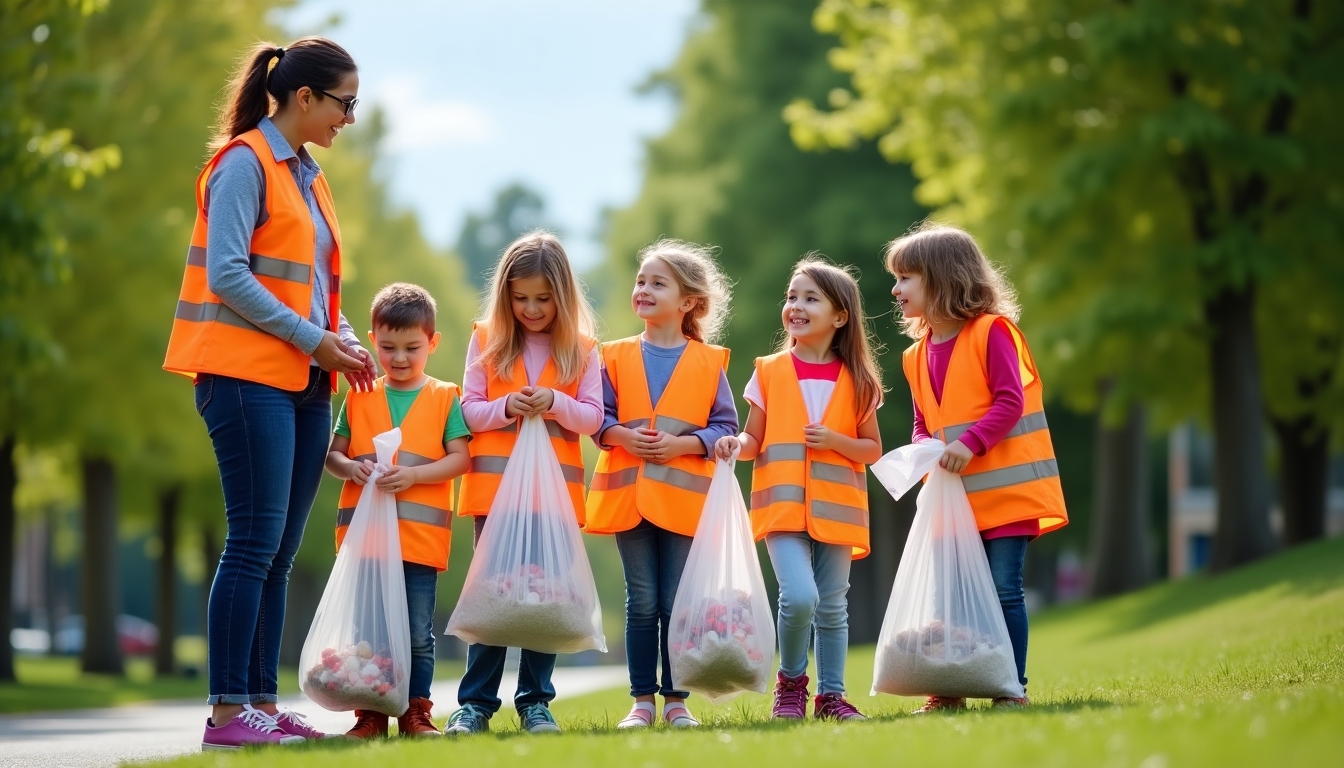Why Service Learning Matters for Kids
By , April 22, 2025
Overview
Service learning is more than just volunteering—it’s a powerful way to combine education with community service. For kids, it builds empathy, sharpens academic skills, and sparks a sense of responsibility. This article dives into why service learning matters for kids and how it shapes their future.
What is Service Learning and Why It Matters for Kids
Have you ever wondered how kids can learn beyond textbooks? Service learning is the answer. It connects classroom lessons to real-world action, like organizing a community service event to clean a park or help a shelter. Kids don’t just volunteer; they grow through hands-on experiences tied to what they study.
Studies show it works. According to the National Center for Education Statistics, students in service learning programs often show better engagement and problem-solving skills. It’s a win-win: kids learn, and communities benefit. So, why does this matter? Because it prepares kids to be thoughtful, active citizens.

Benefits of Service Learning for Kids
Service learning offers a treasure chest of benefits. First, it builds empathy. When kids help others—like sorting donations at a food bank—they see life through different eyes. This isn’t just feel-good stuff; it shapes how they treat people long-term.
Next, it ties schoolwork to reality. Imagine a math lesson where students calculate how much food a shelter needs. Suddenly, numbers mean something. It also boosts teamwork and leadership. Kids learn to collaborate, delegate, and solve problems together, skills they’ll use forever.
Finally, it grows confidence. Completing a project—like planting a school garden—shows kids they can make a difference. A report from Youth Service America found that kids who volunteer through service learning feel more connected to their communities. That’s powerful.

How Service Learning Works
So, how does service learning happen? It starts with tying projects to what kids are learning. Teachers pick a goal—like understanding ecosystems—and match it with action, like planting trees. The key is planning: students, teachers, and community partners work together.
Projects vary widely:
- Environmental: Cleaning rivers or starting recycling drives
- Social: Tutoring peers or visiting seniors
- Cultural: Hosting diversity fairs
Each project ends with reflection—kids talk or write about what they learned, locking in the lesson.
Take organizing a community service event, for example. Kids might plan a book drive, linking it to reading skills. Parents and local groups pitch in, making it a team effort. It’s structured, not random, ensuring real learning happens.

Examples That Inspire
Picture this: at Oakwood Elementary, fifth graders organized a coat drive. They collected over 200 coats, learned about community needs, and even graphed donations for math class. Their teacher said, 'They owned it—and they’ll never forget it.'
Or consider a middle school science class that built a rain garden. Students studied water cycles, then dug in—literally. The garden still helps the schoolyard, and the kids beam with pride. These stories show service learning in action, blending education with impact.
Across the U.S., schools report success. A University of Minnesota study found that service learning boosts grades and attendance. Kids don’t just learn facts—they learn to care.

Challenges and How to Tackle Them
Service learning isn’t always easy. Time is tight—teachers juggle packed schedules. Resources can be slim too; not every school has funds for supplies. Safety’s another concern, especially for off-site projects.
Solutions exist, though. Partner with local groups for support—libraries or nonprofits often help. Use simple projects, like campus cleanups, to start small. For safety, set clear rules and supervision plans. The trick is to keep it doable while keeping learning front and center.
Measuring success can feel tricky too. Grades don’t tell the whole story. Instead, use reflections or project outcomes—like pounds of trash collected—to show impact. It’s about growth, not just numbers.

Clearing Up Misconceptions
Some think service learning is just free labor. Not true—it’s tied to specific lessons, like science or history. Others assume it’s only for teens. Wrong again; even kindergarteners can pitch in with simple tasks like making cards for hospitals.
It’s not random volunteering either. Every project needs a plan and a purpose. Reflection turns action into understanding, making it more than just a good deed.
Getting Started with Service Learning
Ready to try it? Here’s how:
1. Pick a lesson goal (e.g., teamwork or ecology)
2. Find a community need that fits
3. Plan with students and partners
4. Do the project
5. Reflect on it
Start small—success builds momentum.
Resources help too. Check out National Service-Learning Clearinghouse for ideas and grants. Teachers can lead, but parents and community members can spark change too. It’s about teamwork.

Summary
Service learning matters for kids because it blends learning with doing good. It grows empathy, skills, and confidence while strengthening communities. Whether planting gardens or organizing a community service event, kids thrive. Get involved—explore service learning today!